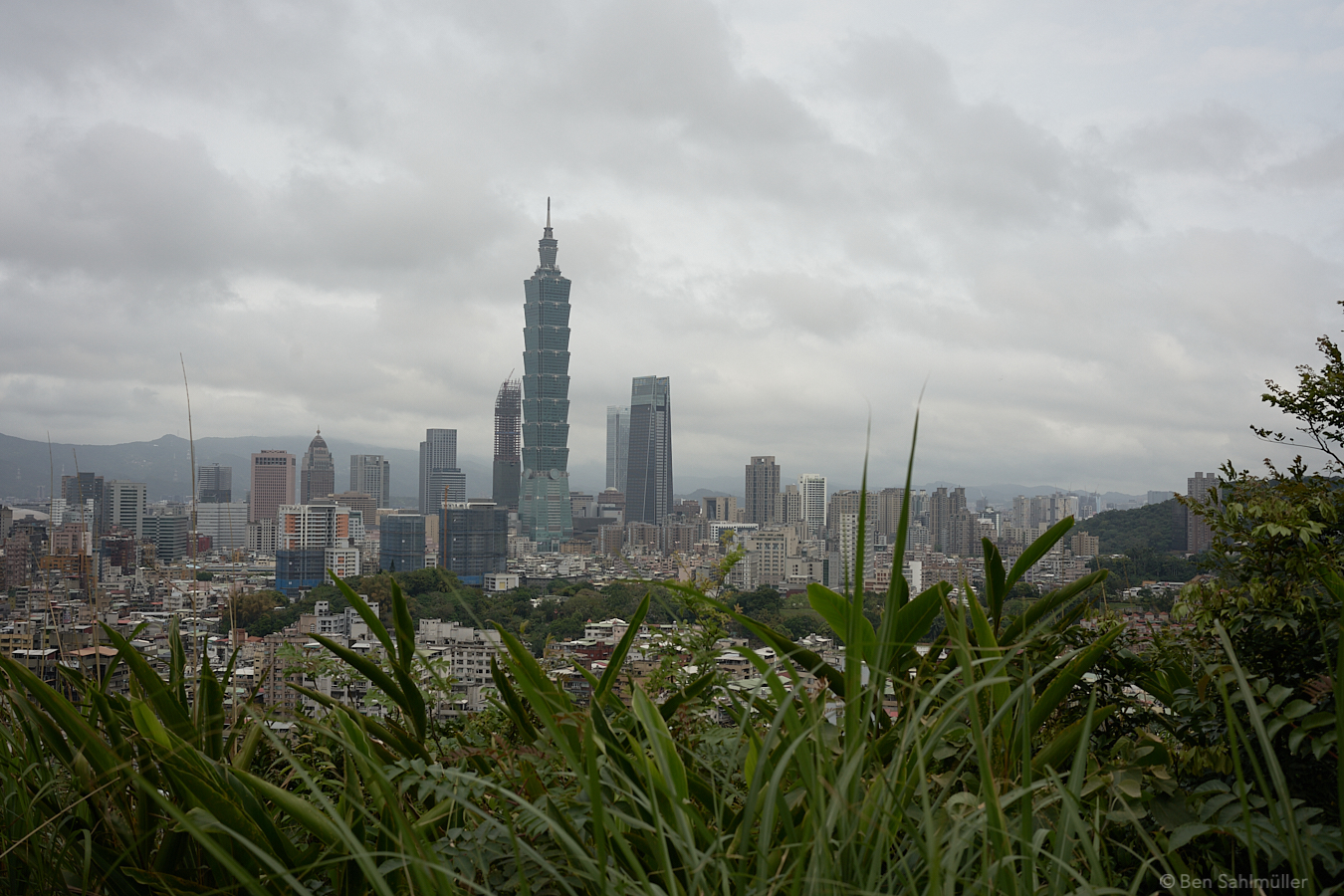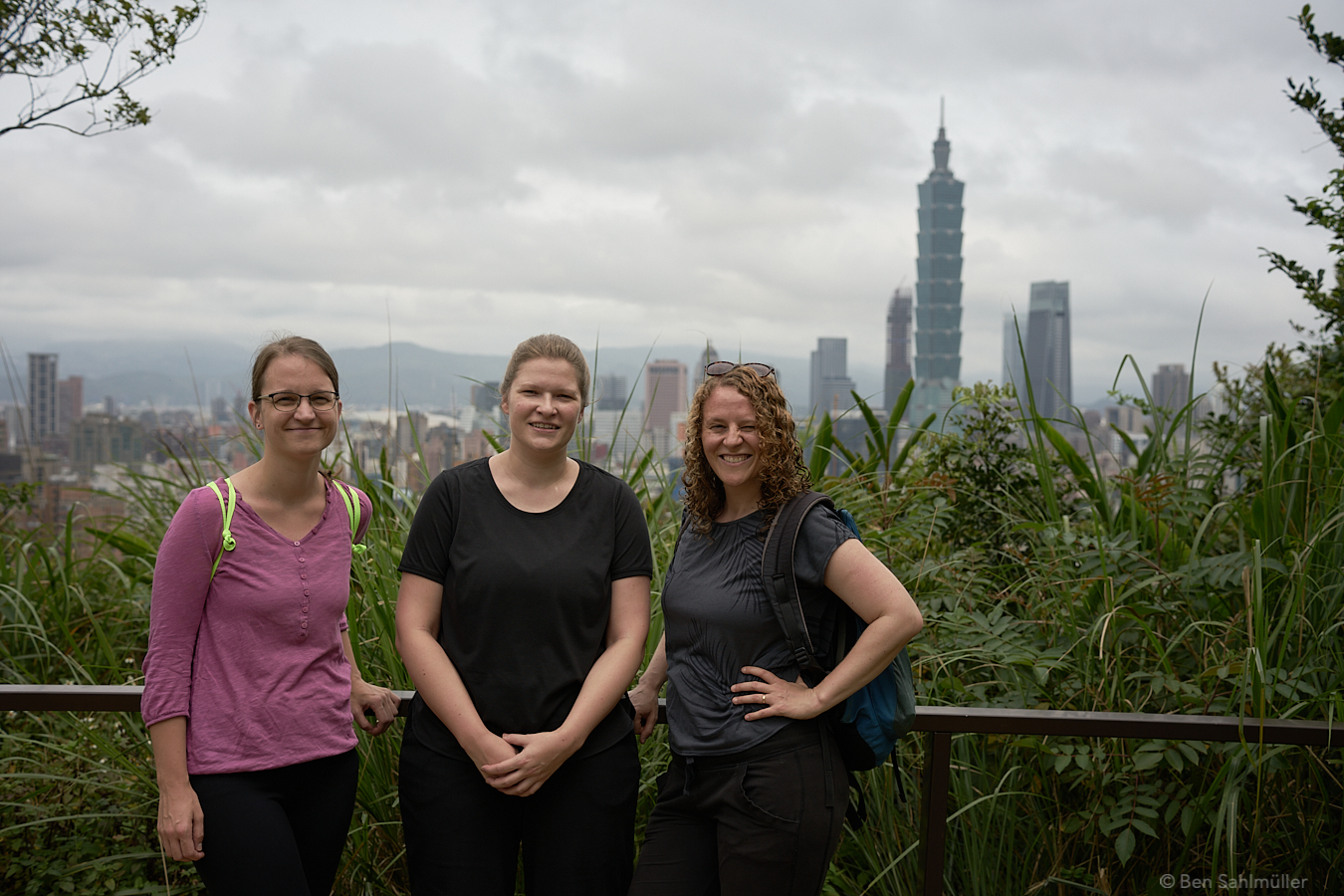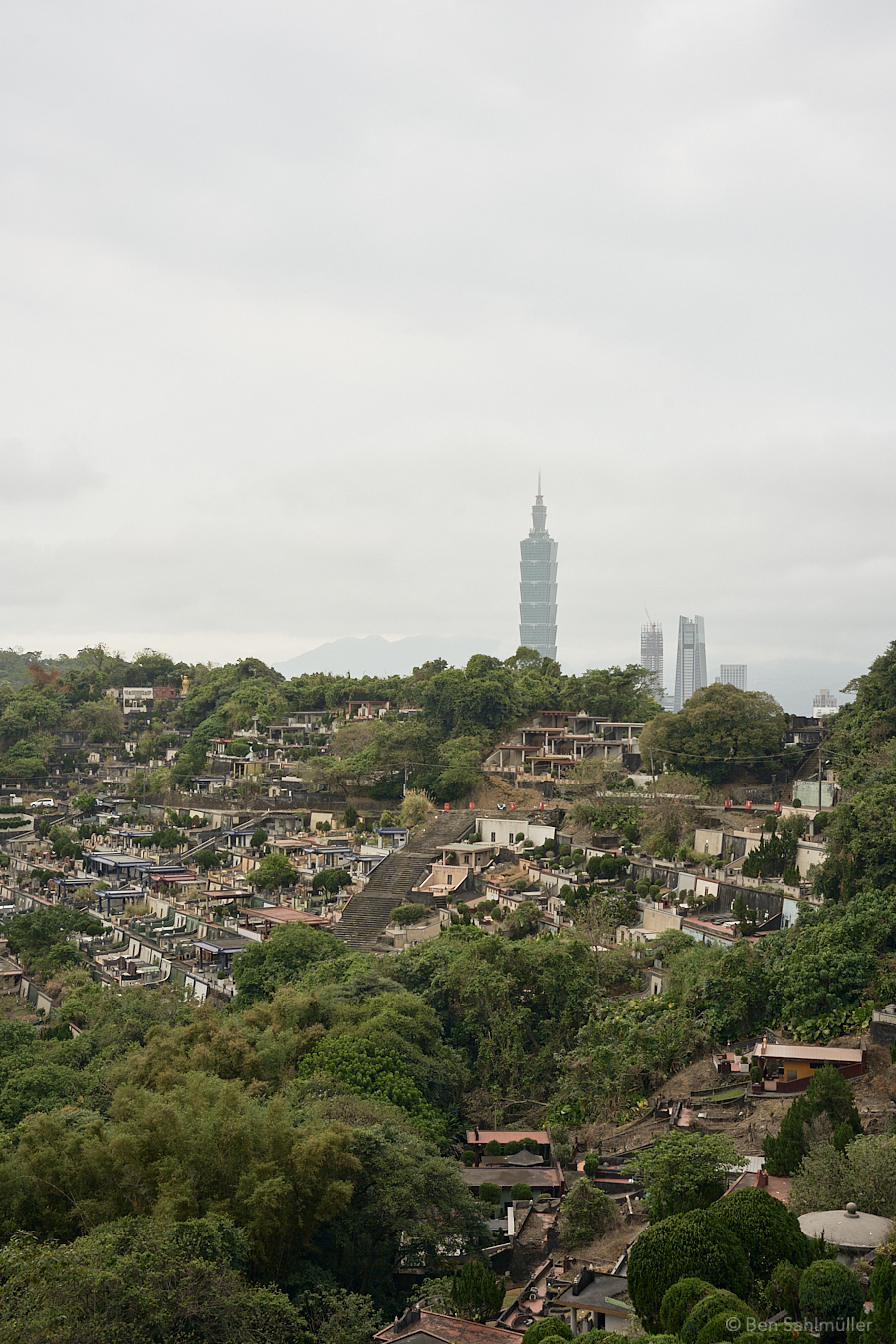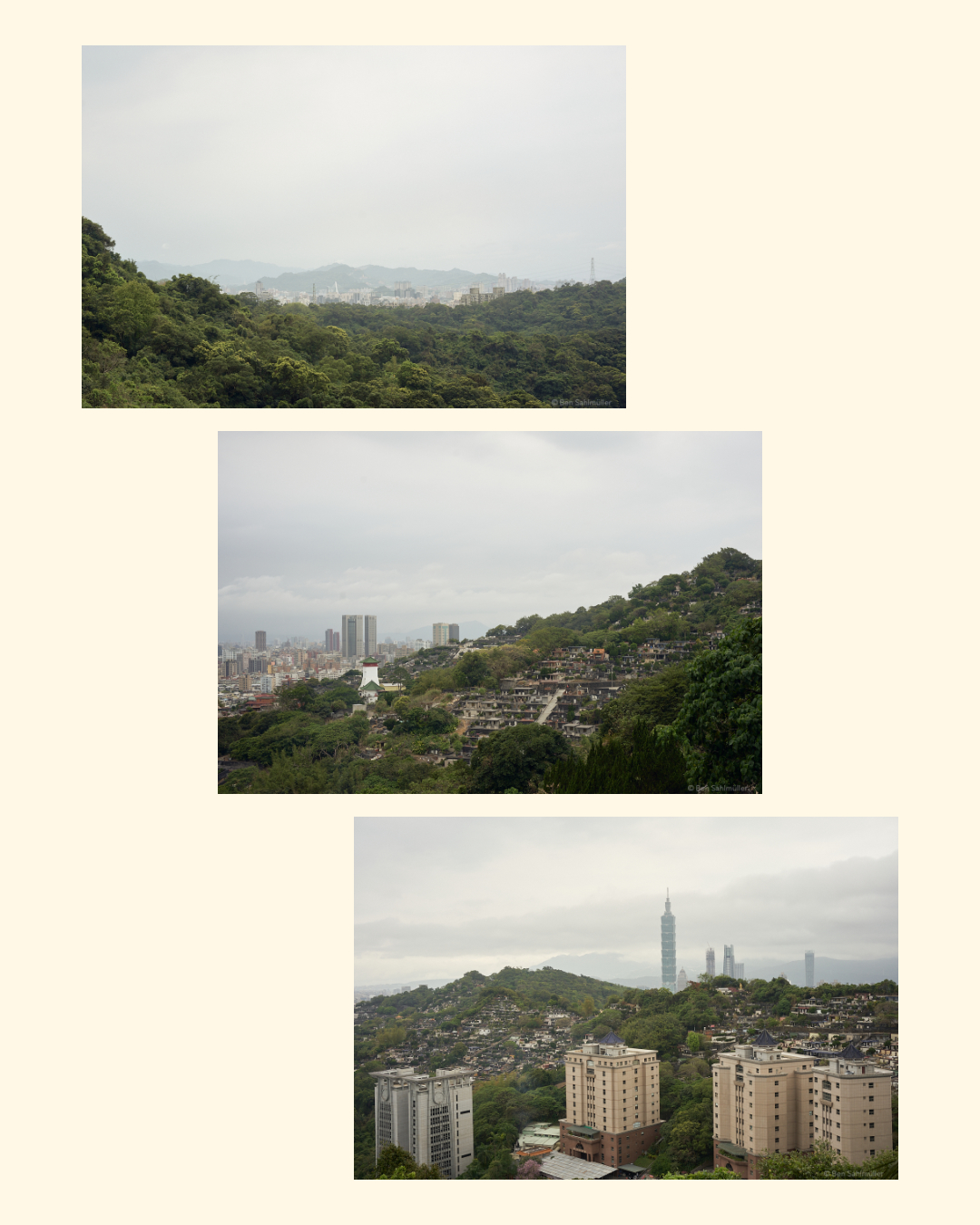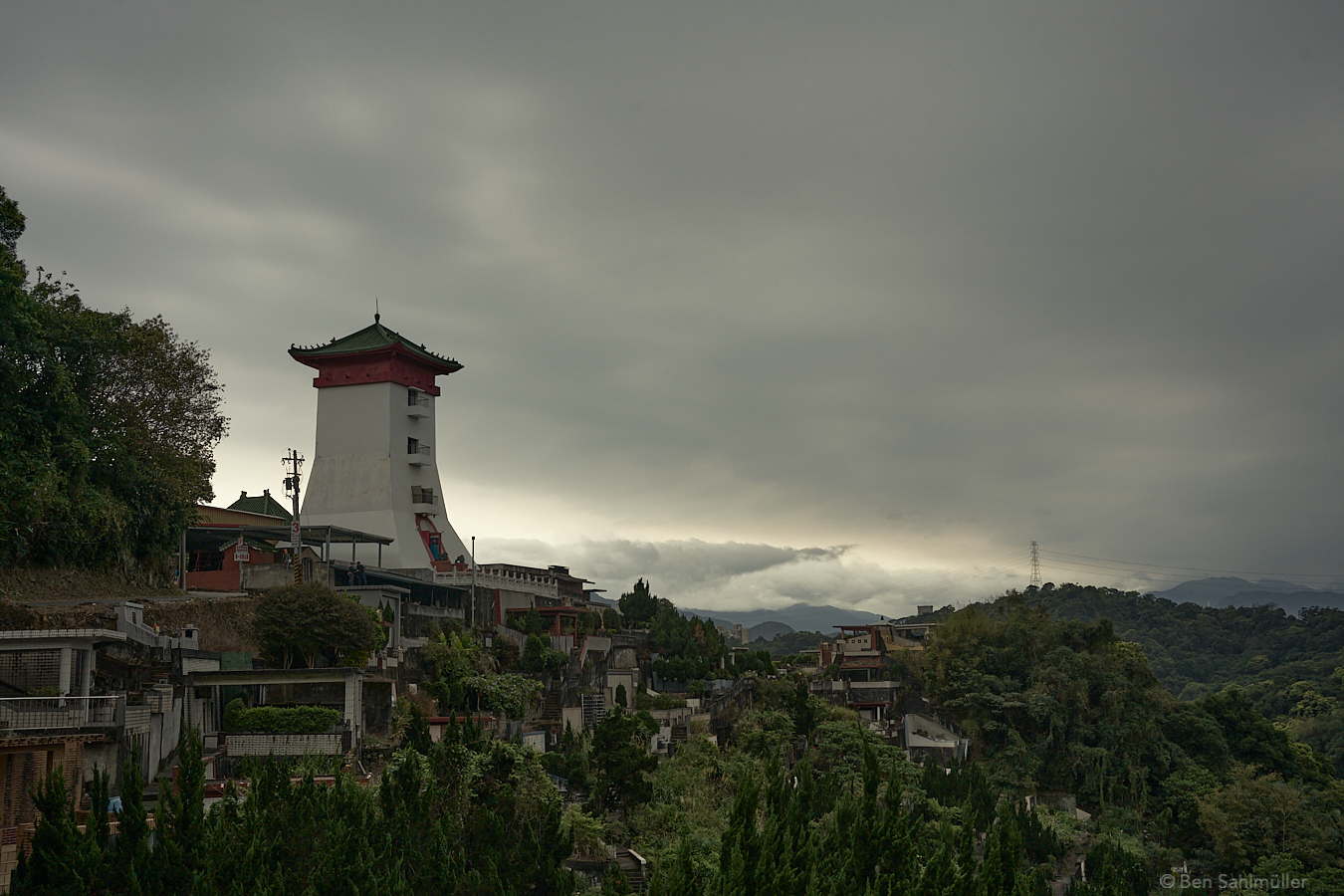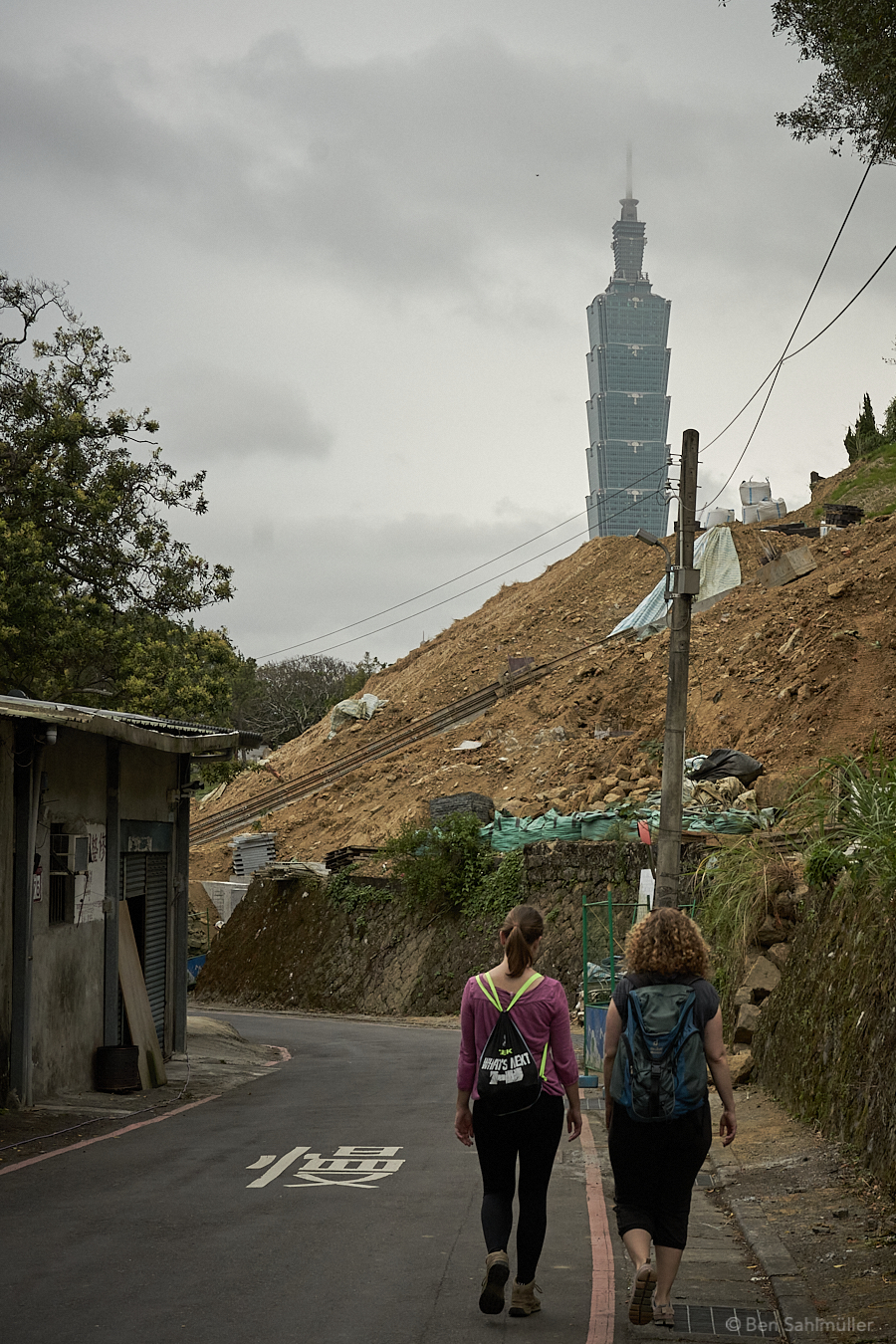Fu De Keng Public Cemetery (富德公墓辦公室), The best view belongs to the dead
It is often said that Taipei is located in a basin. Overlooking the city from one of its high-rises, it quickly becomes clear why. It is because of the hill ranges surrounding the city in their lush dark green, only surmounted by the Yangmingshan volcano in Taipei’s north.
From our neighborhood close to Taipei 101, the Yangmingshan is often hidden by the city’s buildings and haze. So it is the Mountains of the “Four Beast” (四獸山) that are nature’s strongest grasp onto the city. The elephant, tiger, lion, and leopard mountains are popular lookouts, extending to the lower range of Wenshan (文山) hill, reaching deep westwards into the metropolis. And while the hiking trails of the beasts quickly give the wanderer the impression of leaving the city (an illusion, nonetheless), the western part never stops flirting with the city.
The trails of Wenshan are a good way to spend a weekend morning. Close and short enough to even avoid the summer’s heat, they offer a good distraction from the work week and leave enough of the day for some household chores or just chilling.
Visiting it once more at the end of March (2023), we started at the well-planned Fujhoushan Park (福州山公園), from where a smaller trail (土地公嶺古道) leads east. The fact that some of its lifts are left natural without stairs, the path even blocked by storm damage at one point, made it clear that it does not belong to Taipei’s best-known ones. (A definite plus for anyone who wants to avoid the crowds at Elephant Mountain!)
The hill range was beautiful as always, with butterflies, rugged viewpoints, and Taiwan’s colorful flora. Yet, its most interesting part was where it again served civilization, at the wide ranges of Fu De Keng Public Cemetery (富德公墓辦公室). In Taiwan, the mountain sides overlooking cities and the seas belong to the dead, and on the slopes surrounding Taipei, hundreds of mausoleums remind of the generations that were and have built the city.
With its trees and flowers, bricks and faded photographs, the cemetery is a dignified place. It keeps the memory of the ancestors alive, did so especially in the weeks at the end of March before “tomb sweeping day”. Photographs of men in uniform reminded of Taiwans difficult, more military past, its Muslim graves of a more diverse, multicultural present.
(I learned afterwards that in other parts of the cemetery, you can find unmarked graves of pro-democracy protesters buried some 80 years ago after their execution. Complex layers of history, light and dark and dark and light – for a German this too feels like home.)
